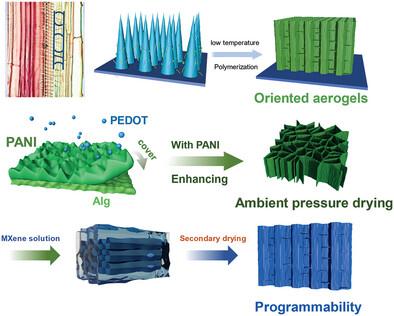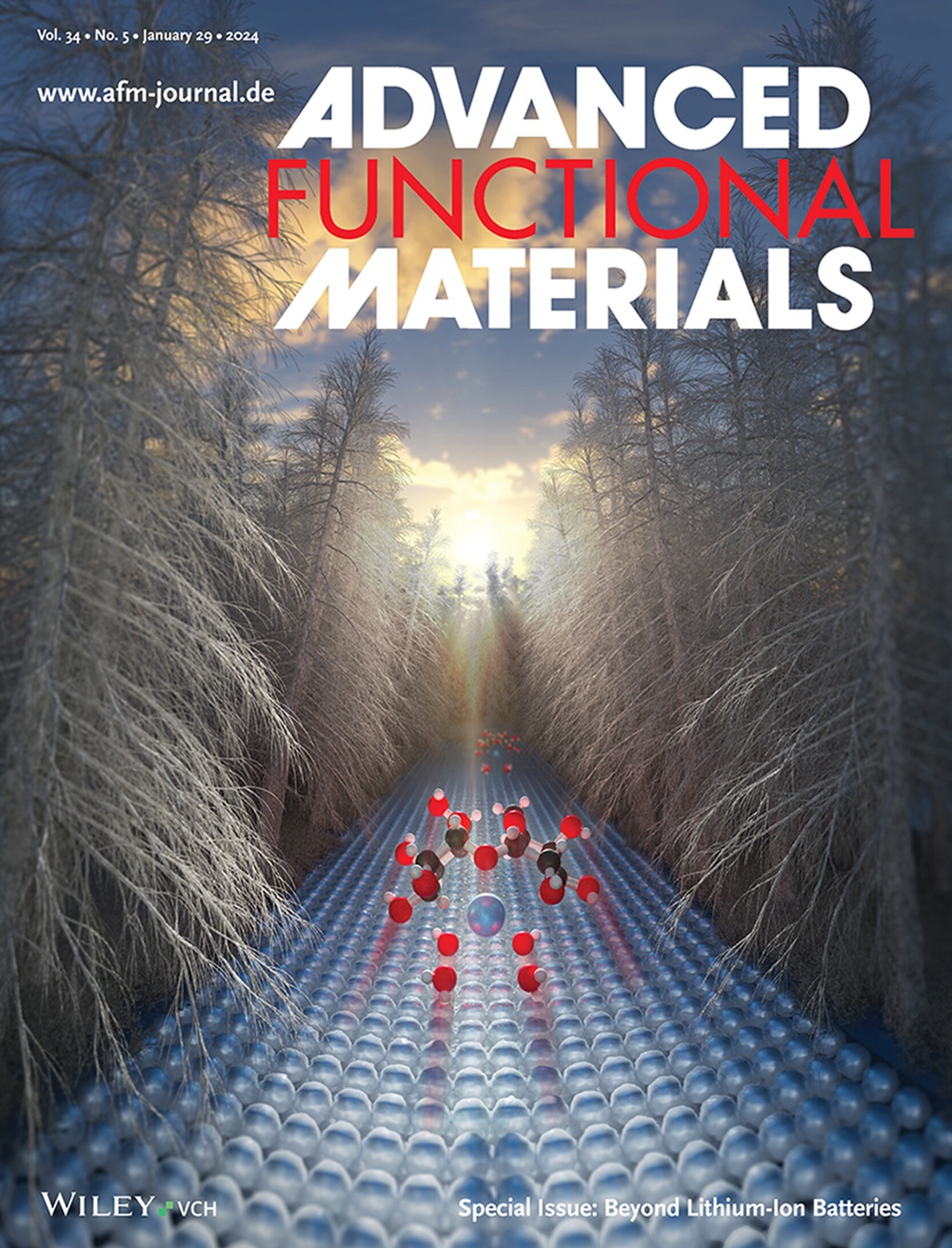Biomimetic Ambient-Pressure-Dried Aerogels with Oriented Microstructures for Enhanced Electromagnetic Shielding
IF 18.5
1区 材料科学
Q1 CHEMISTRY, MULTIDISCIPLINARY
引用次数: 0
Abstract
Oriented aerogels, emerging as a new generation of lightweight electromagnetic interference (EMI) materials, often face complex synthesis processes. While creating an orderly oriented microstructure for EMI aerogels through ambient pressure drying (APD) shows promise, it remains a significant challenge. Here, inspired by the directional grown structure of the plant, a new strategy that employs rapid precursor orientation followed by slow cross-linking to achieve the APD of directional EMI aerogels is proposed. This approach demonstrates that low-temperature oriented polymerization of polyaniline enables strong cross-linking with poly(3,4-ethylenedioxythiophene) and alginate, forming a robust conductive directional skeleton and mitigating surface tension issues during mild drying. The resulting aerogel features high conductivity (48.84 S m−1), excellent flame retardancy, and impressive compressive strength. Notably, its sturdy frame allows for further enhancement with other functional materials, such as Mxene, through re-processing and re-drying. The tree-branch-like aerogel achieves a significantly improved EMI shielding effectiveness of 50.3 dB across an ultrawideband range of 8.2–40 GHz. This strategy offers a new idea for the straightforward preparation of functional aerogels with programmability and oriented microstructures using ambient drying.

具有定向微结构的仿生常压干燥气凝胶可增强电磁屏蔽效果
定向气凝胶是新一代轻质电磁干扰(EMI)材料,通常面临复杂的合成过程。虽然通过常压干燥(APD)为电磁干扰气凝胶创造有序的定向微结构前景广阔,但这仍然是一项重大挑战。受植物定向生长结构的启发,这里提出了一种新策略,即采用快速前驱体定向,然后缓慢交联的方法来实现定向 EMI 气凝胶的 APD。这种方法表明,聚苯胺的低温定向聚合能够与聚(3,4-亚乙二氧基噻吩)和海藻酸发生强交联,形成坚固的定向导电骨架,并在温和干燥过程中缓解表面张力问题。由此产生的气凝胶具有高导电率(48.84 S m-1)、优异的阻燃性和惊人的抗压强度。值得注意的是,通过再加工和再干燥,其坚固的骨架可与其他功能材料(如二甲苯)一起进一步增强。这种树枝状气凝胶在 8.2-40 GHz 的超宽带范围内实现了 50.3 dB 的电磁干扰屏蔽效果。这一策略为利用环境干燥直接制备具有可编程性和定向微结构的功能性气凝胶提供了新思路。
本文章由计算机程序翻译,如有差异,请以英文原文为准。
求助全文
约1分钟内获得全文
求助全文
来源期刊

Advanced Functional Materials
工程技术-材料科学:综合
CiteScore
29.50
自引率
4.20%
发文量
2086
审稿时长
2.1 months
期刊介绍:
Firmly established as a top-tier materials science journal, Advanced Functional Materials reports breakthrough research in all aspects of materials science, including nanotechnology, chemistry, physics, and biology every week.
Advanced Functional Materials is known for its rapid and fair peer review, quality content, and high impact, making it the first choice of the international materials science community.
 求助内容:
求助内容: 应助结果提醒方式:
应助结果提醒方式:


